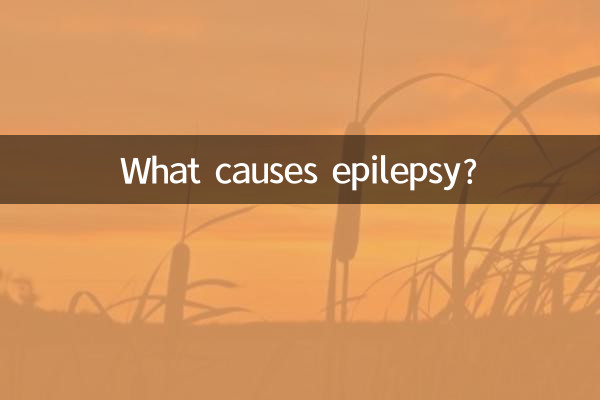What causes epilepsy?
Epilepsy is a common neurological disorder characterized by recurring episodes of abnormal electrical discharges in the brain, resulting in transient functional impairment. In recent years, the incidence of epilepsy has increased and attracted widespread attention. This article will combine the hot topics and hot content on the Internet in the past 10 days and conduct a structured analysis from the definition, cause, symptoms and treatment of epilepsy to help readers fully understand this disease.
1. Definition of epilepsy

Epilepsy is a chronic brain disease characterized by sudden abnormal discharges of brain neurons, resulting in transient dysfunction. Epileptic seizures have various manifestations and may include loss of consciousness, limb twitching, abnormal sensation, etc. According to the World Health Organization (WHO), there are approximately 50 million epilepsy patients worldwide, 80% of whom are from low- and middle-income countries.
2. Causes of epilepsy
The causes of epilepsy are complex and diverse, including both genetic and acquired factors. The following are classifications of the main causes of epilepsy:
| Cause type | specific reasons | Proportion (%) |
|---|---|---|
| genetic factors | Family inheritance, genetic mutation | 30-40 |
| brain damage | Traumatic brain injury, stroke, brain tumor | 20-30 |
| Infectious diseases | Meningitis, encephalitis, parasitic infections | 10-20 |
| Metabolic abnormalities | Hypoglycemia, hypocalcemia, uremia | 5-10 |
| other reasons | Drug abuse, alcoholism, hypoxia | 10-20 |
3. Symptoms of epilepsy
Symptoms of epileptic seizures vary depending on the area of the brain where the abnormal discharge occurs. The following are common types of epileptic seizures and their symptoms:
| Seizure type | Main symptoms | duration |
|---|---|---|
| generalized tonic-clonic seizure | Loss of consciousness, convulsions all over the body, foaming at the mouth | 1-3 minutes |
| absence seizure | Temporary loss of consciousness and immobility | 5-20 seconds |
| partial seizure | Local limb twitching and abnormal sensation | seconds to minutes |
| complex partial seizures | Confusion, automatisms (such as chewing, groping) | 1-2 minutes |
4. Treatment of epilepsy
The treatment of epilepsy mainly includes drug treatment, surgical treatment and lifestyle adjustment. Here are common treatments and their effects:
| Treatment | Applicable people | Effectiveness (%) |
|---|---|---|
| anti-epileptic drugs | About 70% of patients | 60-70 |
| surgical treatment | drug-refractory epilepsy | 50-60 |
| ketogenic diet | Intractable epilepsy in children | 30-40 |
| neuromodulation | Those who are ineffective with drugs and surgery | 40-50 |
5. Prevention of epilepsy
The key to preventing epilepsy is to reduce brain damage and avoid triggers. Here are some precautions:
1.Avoid head trauma: Wear a helmet, seat belt, etc.
2.control infectious diseases: Get vaccinated in time to avoid brain infection.
3.maintain a healthy lifestyle: Avoid staying up late, drinking alcohol, and abusing drugs.
4.Regular physical examination: Early detection and treatment of diseases that may cause epilepsy.
6. Conclusion
Epilepsy is a complex neurological disease with diverse causes and symptoms. Through scientific treatment and preventive measures, the condition of most patients can be effectively controlled. If you or someone around you has symptoms of epilepsy, it is recommended to seek medical treatment promptly and receive professional diagnosis and treatment.

check the details

check the details